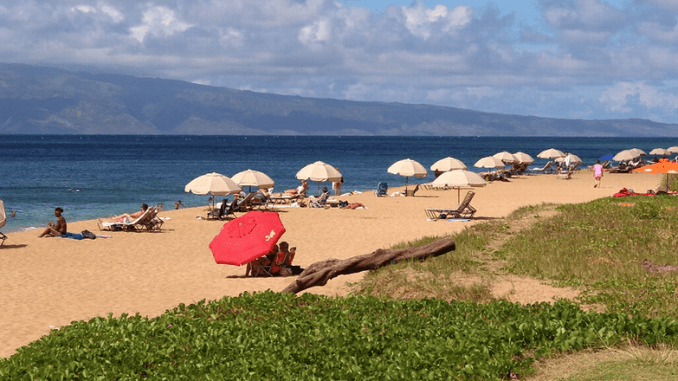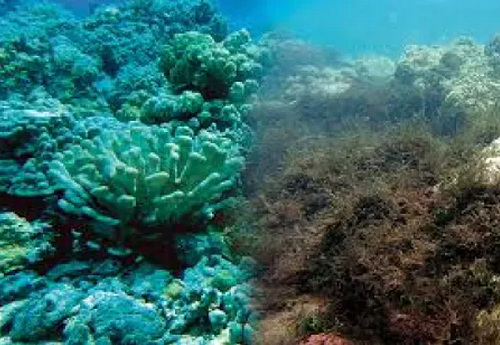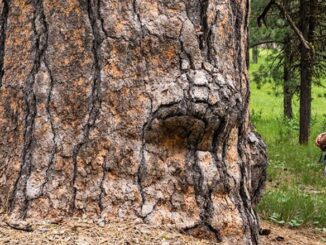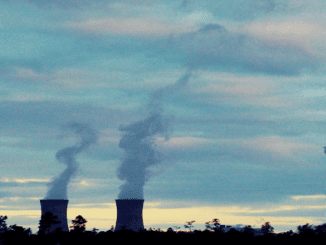
HONOLULU, Hawaii, November 6, 2021 (ENS) – The County of Maui has lost another court ruling in its campaign to avoid getting a Clean Water Act permit for injection wells at the Lahaina Wastewater Reclamation Facility in West Maui.
For decades, the Lahaina wastewater treatment facility has been discharging three to five million of gallons of treated sewage daily into groundwater that reaches the waters off Kahekili Beach Park, a favorite local snorkeling and surfing spot, devastating a formerly pristine reef and recreational resources.
In April of 2012, Surfrider Foundation, Sierra Club-Maui Group, West Maui Preservation Association and the Hawaii Wildlife Fund, represented by the public interest law firm Earthjustice, filed suit in federal district court to address water quality violations of the county and the resulting intense threat to beachgoer health and safety posed by contaminated nearshore waters.
Throughout this lenghthy legal battle, the county has insisted that any ocean pollution through underground dumping is exempt from the Clean Water Act.
The first lower court case culminated in a ruling for the plaintiff environmental groups on May 30, 2014 on the county’s failure to obtain a National Pollutant Discharge Elimination Permit, an NPDES Permit.
Maui County has appealed every step of the litigation, and has been unsuccessful at every turn. In 2014 and again in 2015, the Hawaii district court determined that discharges from the Lahaina injection wells violate the Clean Water Act. In 2018, the Ninth Circuit Court of Appeals affirmed the district court’s rulings.

On October 21, Judge Susan Oki Mollway of the U.S. District Court for the District of Hawaii ruled in favor of the environmental group plaintiffs.
“The discharge from the County’s injection wells into the groundwater and ultimately into the ocean is the functional equivalent of a direct discharge such that it triggers the NPDES permit requirement,” Judge Mollway ruled.
The judge rejected the county’s claim that it could evade responsibility for violating the Clean Water Act unless Maui-based plaintiff groups could prove “exactly where each drop of wastewater reached the ocean,” noting that this would be “an impossible task.”
“Clean ocean water is a public right, and the County of Maui has continued to fail the community in protecting this right,” said Lauren Blickley, Hawaii Regional Manager for Surfrider. “We are thankful that the courts continue to protect our coastal waters.”
The Hawaii District Court is the first court in the nation to apply the U.S. Supreme Court’s test for when pollutant discharges that reach surface waters via groundwater require a Clean Water Act permit, which the Supreme Court announced in 2020 in an earlier phase of the case.
“The Hawaii District Court’s ruling is welcome news to everyone across the country who is fighting to protect clean, healthy water for future generations,” said David Henkin, senior attorney at Earthjustice who argued the case before the Supreme Court and the Hawaii District Court.
“As the first court to apply the Supreme Court’s test, the court sent a strong message of hope to communities working to defend their oceans, rivers, and lakes from polluters like Maui County that are fouling those life-giving waters by using groundwater as a sewer,” Henkin said.
Last year the U.S. Supreme Court rejected as “unreasonable” Maui County’s argument that the Lahaina injection wells do not require Clean Water Act permits because they do not discharge “directly” into waters of the United States, but instead pollute through groundwater.
The Supreme Court noted that the county’s interpretation would “create a serious loophole” in the Clean Water Act’s permitting regime, subverting congressional intent.
The Supreme Court held instead that the Clean Water Act requires a permit “if the addition of the pollutants through groundwater is the functional equivalent of a direct discharge from the point source,” such as a pipe, “into navigable waters.”
“After a string of losses extending over nearly a decade of litigation, it’s time for the county finally to accept its kuleana [responsibility] towards the nearshore waters of West Maui,” said Lance Collins, spokesperson for plaintiff West Maui Preservation Association.
“I remember the West Maui reefs teeming with marine life before the Lahaina injection wells started harming water quality and killing the reefs,” said Lucienne de Naie, who chairs Sierra Club Maui. “This historic decision sends a clear message to Maui’s administration: get the proper permits and start the process of bringing life back to our ocean and reefs.”
The county allocated $4.3 million to pay a mainland-based law firm to represent the county during the initial round of litigation in the Hawaii district court, before the Ninth Circuit Court of Appeals, and before the Supreme Court. Following the Supreme Court’s ruling, the county spent hundreds of thousands of additional taxpayer dollars on experts in its unsuccessful effort to avoid Clean Water Act liability.
“Mayor Victorino ignored the County Council’s resolution to settle this case, saying he needed the Supreme Court to provide ‘clarity’ regarding the Clean Water Act’s requirements,” said Hannah Bernard, executive director of Hawaii Wildlife Fund. “Well, the Supreme Court ruled against the county, and now the Hawaii district court has too. How much clearer can the county’s legal obligations possibly get? It’s high time for the county to stop wasting our taxpayer dollars on litigation and instead start investing in fixing the problem.”
The only way this case can continue is if Maui County appeals the Hawaii district court fuling to the Ninth Circuit Court of Appeals before the deadline of November 19.
Featured image: Kahekili Beach Park on Maui’s northwestern shore is named for the last king of Maui, King Kahekili Nui’Ahumanu (1737 – 1794). It is also called Airport Beach for the small regional airport that was on the site in the 1960s-1980s. The beach overlooks the nearby island of Lanai. (Photo courtesy Maui County)
© 2021, Environment News Service. All rights reserved. Content may be quoted only with proper attribution and a direct link to the original article. Full reproduction is prohibited.



